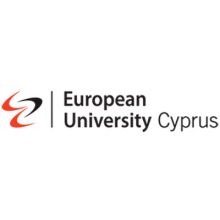BRICS & Emerging Economies University Rankings 2017
The Times Higher Education BRICS & Emerging Economies University Rankings 2017 includes only institutions in countries classified as “advanced emerging”, “secondary emerging” or “frontier” by the FTSE, including the BRICS nations of Brazil, Russia, India, China and South Africa.
The rankings use the same 13 performance indicators as the flagship THE World University Rankings to judge institutions on their teaching, research, knowledge transfer and international outlook. But they are recalibrated to reflect the development priorities of universities in emerging economies.
View the BRICS & Emerging Economies University Rankings 2017 methodology
For the first time the ranking includes 300 universities, up from 200 institutions last year, and 100 institutions in the previous two years.
China once again dominates the list of the best universities in the BRICS and emerging economies, with 52 – or more than one in six – places. A staggering 44 of these make the top 200, five more than last year, while six make the elite top 10.
India has also made great strides, with its flagship university, the Indian Institute of Science, breaking into the top 15 for the first time this year in 14th place.
However, the other BRICS nations are struggling. While 11 of Brazil’s 25 representatives feature for the first time, the majority of the other 14 institutions have dropped places. The country no longer has any representatives in the top 10 as the University of São Paulo slips four places to 13th, its lowest ever position, while the Pontifical Catholic University of Rio de Janeiro (PUC-Rio) drops out of the top 50, falling 12 places to 55th.
Meanwhile, half of South Africa’s eight universities have fallen.
Russia’s performance is more mixed; it has 14 institutions in the top 200, down from 15 last year, several of which have either gained or lost several places. While the Moscow Institute of Physics and Technology climbs an impressive 81 places to 12th, thanks to an improved performance across all five pillars underlying the methodology, Peter the Great St Petersburg Polytechnic University falls 89 places to joint 107th, due to a much weaker research influence than last year.
This year’s table includes 41 countries, up from 35 last year, with institutions in Bulgaria, Latvia, the Philippines and Tunisia featuring for the first time.
Read our full analysis of the BRICS & Emerging Economies University Rankings 2017 results
Claim a copy of the BRICS & Emerging Economies University Rankings digital supplement
Countries eligible for the BRICS and Emerging Economies ranking:
Country eligibility is determined by FTSE classification.
Advanced emerging:
Brazil, Czech Republic, Greece, Hungary, Malaysia, Mexico, Poland, South Africa, Taiwan, Thailand, Turkey
Secondary emerging:
Chile, China, Colombia, Egypt, India, Indonesia, Pakistan, Peru, Philippines, Qatar, Russia, UAE
Frontier:
Bahrain, Bangladesh, Botswana, Bulgaria, Cote d'Ivoire, Croatia, Cyprus, Estonia, Ghana, Jordan, Kenya, Latvia, Lithuania, Macedonia, Malta, Mauritius, Morocco, Nigeria, Oman, Palestine, Romania, Serbia, Slovakia, Sri Lanka, Tunisia, Vietnam
To raise your university’s global profile with Times Higher Education, please contact branding@timeshighereducation.com
To unlock the data behind THE’s rankings, and access a range of analytical and benchmarking tools, contact data@timeshighereducation.com
| rank order | Rank | Name Country/Region | Node ID | Overall | Citations | Industry Income | International Outlook | Research | Teaching | No. of FTE Students | No. of students per staff | International Students | Female:Male Ratio |
|---|







